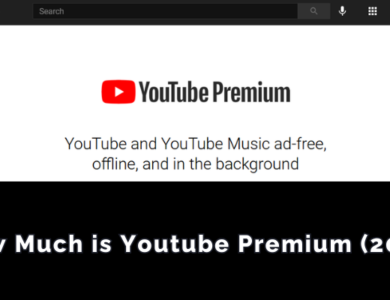When Was YouTube Created?

YouTube, the world’s largest video-sharing platform, has revolutionized how we consume and share content. Launched in 2005, YouTube has grown exponentially, becoming an essential part of our daily digital lives. Whether it’s for entertainment, education, or news, millions of people turn to YouTube every day. The platform’s impact is evident in its vast array of content, ranging from viral cat videos to in-depth tutorials and full-length documentaries. But how did this phenomenon start? The journey of YouTube from a simple idea to a global powerhouse is a fascinating story of innovation, challenges, and cultural transformation. In this blog, we will delve into the origins of YouTube, exploring its creation, the vision behind it, and how it evolved into the cultural and technological giant it is today. From its early days of rapid growth and acquisition by Google to its profound influence on modern culture and society, we will cover the key milestones that have defined YouTube’s remarkable journey. Join us as we uncover the history behind the platform that has forever changed the way we share and view content.

The Founding of YouTube
YouTube was founded by three former PayPal employees: Steve Chen, Chad Hurley, and Jawed Karim. The idea for the platform emerged in early 2005 when the trio encountered difficulties sharing videos online. This frustration sparked the vision for a user-friendly site where people could easily upload, share, and view videos. Hurley, a designer, Chen, a developer, and Karim, an engineer, combined their skills to bring this vision to life.
On February 14, 2005, the founders officially registered the domain name “youtube.com.” They began working in a garage, a humble setting reminiscent of other tech giants’ origins, with the goal of creating a simple interface that anyone could use. The team developed the site’s core functionalities, focusing on ease of use and accessibility.
The first video ever uploaded to YouTube, titled “Me at the zoo,” was posted by Karim on April 23, 2005. This 19-second clip, featuring Karim at the San Diego Zoo, marked the start of a new era in digital media. Despite its simplicity, the video demonstrated YouTube’s potential for personal expression and sharing experiences.
YouTube’s initial concept centered around the idea of democratizing video sharing. Unlike traditional media, which required significant resources and distribution networks, YouTube allowed anyone with an internet connection to share their videos with the world. This revolutionary approach quickly resonated with users, leading to rapid growth.
By the summer of 2005, YouTube’s beta site was attracting a small but growing user base. The founders knew they were onto something big when the site started gaining traction beyond their initial circle of friends and early adopters. They received their first significant investment from Sequoia Capital in November 2005, securing $3.5 million to further develop the platform and expand their team.
As YouTube continued to grow, the founders faced numerous challenges, including scaling the site to handle increasing traffic and addressing legal issues related to copyright infringement. Despite these hurdles, their commitment to making video sharing accessible to all remained unwavering. By the end of 2005, YouTube was well on its way to becoming a household name, setting the stage for its future as the world’s leading video-sharing platform.
The Initial Concept and Development
The initial concept for YouTube was centered around the idea of creating an easy-to-use platform where anyone could upload, share, and view videos. The founders, Steve Chen, Chad Hurley, and Jawed Karim, envisioned a site that simplified the process of video sharing, addressing the frustrations they experienced with existing solutions. Their goal was to democratize video content, making it accessible to everyone regardless of technical expertise.
To bring their vision to life, the team focused on creating a user-friendly interface. They wanted a platform that required minimal effort to upload and watch videos. The first version of YouTube was built with simplicity in mind, featuring a basic homepage, a search bar, and easy-to-navigate categories. This straightforward design helped attract a wide range of users, from tech enthusiasts to casual internet surfers.
On April 23, 2005, the first video, “Me at the zoo,” was uploaded by Jawed Karim. This short, 19-second clip of Karim at the San Diego Zoo showcased the platform’s potential for personal storytelling and sharing everyday moments. Despite its humble beginning, the video symbolized the essence of YouTube’s mission: to provide a space for people to share their lives and connect with others.

During its development phase, YouTube also focused on ensuring the platform could handle video uploads efficiently. They implemented Flash Video technology, which allowed for faster streaming and playback, enhancing the user experience. As the site gained popularity, the team continued to refine its features and improve its infrastructure, setting the stage for YouTube’s explosive growth in the years to come.
Acquisition by Google
in November 2006 for a staggering $1.65 billion in stock. This acquisition marked one of the largest deals in the history of the internet at that time, underscoring the significant impact YouTube had already made in its short existence.
Google’s acquisition provided YouTube with the necessary resources and support to handle its rapid growth and address various challenges, including technical scalability and legal issues. With Google’s robust infrastructure and financial backing, YouTube was able to enhance its platform, ensuring a smoother user experience and accommodating an ever-increasing number of videos and viewers.
One of the immediate benefits of the acquisition was improved server capacity and bandwidth. This allowed YouTube to scale more efficiently, offering faster load times and higher quality video streaming. Additionally, Google’s expertise in search technology helped optimize YouTube’s search algorithms, making it easier for users to discover content.
The acquisition also addressed YouTube’s ongoing legal challenges, particularly concerning copyright infringement. With Google’s extensive legal resources, YouTube was able to establish better copyright management systems, including the Content ID system, which allowed copyright holders to identify and manage their content on the platform.








